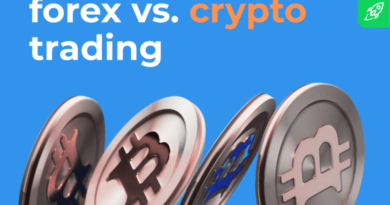What Is Total Value Locked (TVL) in Crypto?
Most investors focus on market cap, but forget to check how much of a crypto is actually in use. That’s the problem Total Value Locked (TVL) solves. TVL measures real-time participation in DeFi projects. It helps you filter out empty hype and focus on where exactly capital is working. This guide explains how TVL works and why it matters for your portfolio.
What Is Total Value Locked (TVL)?
Total Value Locked (TVL) measures the dollar value of all digital assets locked in DeFi protocols. This includes crypto assets like ETH, stablecoins, and liquidity pool tokens. Whenever users stake, lend, or deposit funds into smart contracts, those deposits contribute to the platform’s total value locked (TVL).

TVL tracks how much capital is actively working in a protocol at current prices. The metric reflects user trust and liquidity depth, making it one of the most watched numbers in decentralized finance. Platforms with higher TVL tend to attract more attention from investors, developers, and the broader crypto sector.
How Is TVL Calculated?
TVL is calculated by summing the total market value of all digital assets locked in a protocol.
First, list every token—like ETH, USDC, or LP tokens—and record the amounts. Then multiply each balance by its current USD price. Add the results together. This is the basic TVL calculation.
Since crypto TVL calculated manually is complex, most users rely on platforms like DefiLlama and CoinGecko. These dashboards track assets locked across chains in real time using blockchain data and token prices.
As of mid-2025, DefiLlama reports about $127 billion locked in DeFi protocols worldwide.
Why Is TVL Important in Crypto?
TVL is a critical metric in crypto because it reflects real user commitment. A platform with higher TVL shows it’s trusted and actively used. Users lock funds because they believe in the platform’s services and reliability.
Indicator of Trust and Adoption
When investor and developer interest grows, TVL usually rises. More investor interest means more deposits. More developer interest follows, since developers prefer to build on platforms with strong user engagement and community traction.
Liquidity Assessment
TVL tracks asset utilization.
A higher TVL means larger, deeper liquidity pools, allowing big trades with less slippage.
A lower TVL signals reduced liquidity or fading user confidence.
Project Growth Tracking
TVL reveals project momentum. Increasing TVL often points to user growth and product expansion. Analysts follow TVL trends to compare crypto projects and market shifts. A surge can attract investors, while a drop can raise concerns.
Protocol Comparison
Comparing different DeFi projects by a protocol’s TVL shows who leads the market.
For example, a lending protocol like Aave consistently ranks high because users lock funds to earn interest. A large TVL for a DeFi platform reflects strong demand.
Security Consideration
Big TVL demands robust network security.
Large sums attract attackers. Protocols must audit smart contracts regularly to prevent exploits. A security breach can cause instant flight of capital. Always weigh security concerns before locking your funds.
What Factors Influence TVL?
Prices, incentives, security, and many other factors affect TVL in DeFi.

Yield Opportunities
Users increase their assets staked to earn returns. High-yield lending platforms attract funds quickly. For example, Convex Finance reached billions in TVL by offering extra rewards for Curve staking. Yield is a major magnet for locked funds.
Market Conditions
TVL tracks market sentiment. In a bull run, the crypto market lifts TVL as token prices rise. In bear markets, negative market sentiment causes TVL to drop—even if no one withdraws—because asset prices fall.
Protocol Features and Innovation
Advanced DeFi protocols and smart contracts often lead in TVL. Innovations like better yield options or streamlined management of underlying assets attract attention. Simpler UX or better rates also drive adoption.
Security Reputation
TVL shrinks fast if users see perceived risks. If a project’s TVL looks artificially inflated, capital will exit. Security and transparency are essential to sustain deposits.
Token Incentives
Rewards fuel TVL growth. Many protocols offer tokens to bring in capital. But this strategy has limits. When incentives stop, TVL metrics can crash. A high TVL suffers if capital moves to better opportunities.
What Is a Good TVL Ratio?
A good TVL ratio (aka market cap / TVL) depends on the project’s purpose.
For lending platforms and DEXs, a ratio close to 1 usually shows balanced growth between token value and assets locked.
For staking apps, ratios higher than that can still be healthy because the native token drives demand.
As usual, context is key. Compare similar protocols, not unrelated ones. TVL alone won’t tell you if a project is overvalued, but the ratio reveals how efficiently capital flows through the system. It’s an important metric for spotting real usage versus speculation.
TVL vs. Market Capitalization
TVL and market cap measure different aspects of a crypto project. TVL tracks the assets locked inside a protocol—the real funds committed by users. Market capitalization measures the token’s market value by multiplying price by circulating supply.
Why compare them? Because it shows the gap between speculation and actual usage. A project with a huge market cap but low TVL might be overpriced. Conversely, high TVL with a smaller market capitalization can signal an undervalued token with strong real-world activity.
Use this comparison to spot mismatches between hype and utility. DeFi investors often rely on this analysis to separate trending tokens from fundamentally sound projects. For example, if two lending apps offer similar services, but one has double the TVL with half the market cap, it could represent a better entry point. Always consider both numbers together to get a clearer view of a protocol’s health.
Limitations of TVL
TVL only measures the locked assets in a protocol, not its true health. It doesn’t show how many users are active, how much revenue is generated, or how secure the platform is.
In the DeFi space, protocols can manipulate TVL with high-yield incentives, attracting short-term capital that leaves once rewards end. This happened during the SushiSwap “vampire attack” in 2020, when Sushi lured over $1 billion from Uniswap by offering bonus tokens. The TVL skyrocketed, then dropped quickly after rewards declined.
TVL also rises or falls with token prices, even if user behavior stays the same.
Double-counting is another issue—one asset might be reused across platforms, inflating the numbers. That’s why TVL is just one metric, not a complete indicator of value or safety.
How Do Investors Use TVL?
TVL is an important decision-making tool. TVL serves as a quick snapshot of where capital flows in the DeFi market. It tells you how much users trust a platform enough to lock funds. But smart investors look deeper.

Still, you should always check what’s behind the TVL. Are users depositing stablecoins, ETH, or high-risk tokens? Are they lending, staking, or providing liquidity? This helps you understand the protocol’s real use case.
Investors react fast to TVL shifts. Watching TVL alongside news lets you spot market changes early.
Also check TVL trends over time, not just daily figures. Steady growth is healthier than sudden spikes from short-term rewards. Compare projects in the same category—DEXs, lending apps, or staking protocols—to find the strongest performers.
Finally, always combine TVL with other signals like trading volume, user activity, and audits. DeFi is about trust, liquidity, and innovation. No single number shows the full picture. But if you track TVL in context, you’ll spot real opportunities—and avoid traps—before most traders do.
Final Thoughts
DeFi thrives on data, and TVL is one of its core metrics. But numbers alone can mislead. Use TVL to understand where capital is flowing, then ask: why? Is it real growth or just temporary hype? Stay curious. Combine TVL with other research for better investment decisions.
FAQ
Is TVL the same as liquidity?
No. TVL tracks assets locked, while liquidity measures how easily you can trade. Liquidity comes from liquidity pools, where users deposit funds to support trading. TVL includes staked, lent, or deposited assets, not just tradable ones. Both metrics matter, but they measure different things.
Which is the best TVL coin?
The answer changes over time. In 2025, leaders include Ethereum, Aave, Lido, and Convex Finance. Each has billions in TVL due to staking, lending, or liquidity services. The “best” coin depends on what you’re looking for: yield, stability, or long-term growth.
Is a higher TVL always better?
Not always. A high TVL suffers if it’s driven only by temporary rewards. You need to look at organic growth, not just deposits. Quality of capital matters as much as quantity. Check user activity, not just dollar value.
Can TVL be manipulated or faked?
Yes. Some protocols offer unsustainable rewards, creating artificially inflated TVL. Others use tactics like double-counting. Always review the protocol’s audits, community reputation, and actual usage before trusting the numbers.
What happens to TVL when crypto prices go up or down?
TVL reflects both user deposits and asset prices. When crypto prices rise, TVL figures increase—even if no new funds are added. When prices fall, TVL drops automatically. That’s why it’s important to track long-term trends, not just daily changes.
Disclaimer: Please note that the contents of this article are not financial or investing advice. The information provided in this article is the author’s opinion only and should not be considered as offering trading or investing recommendations. We do not make any warranties about the completeness, reliability and accuracy of this information. The cryptocurrency market suffers from high volatility and occasional arbitrary movements. Any investor, trader, or regular crypto users should research multiple viewpoints and be familiar with all local regulations before committing to an investment.
The post What Is Total Value Locked (TVL) in Crypto? appeared first on Cryptocurrency News & Trading Tips – Crypto Blog by Changelly.
Cryptocurrency News & Trading Tips – Crypto Blog by Changelly





















